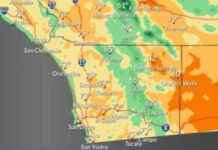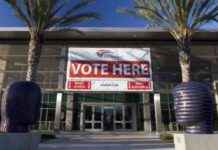Hundreds of protesters entered the official residence of Sri Lankan President Gotabaya Rajapaksa on Saturday during a day of massive protests in Colombo to demand the resignation of the president for his management of the economic crisis.
The protesters broke the security perimeter surrounding Rajapaksa’s official residence in the heart of Colombo despite the fact that the Police resorted to tear gas to prevent the intrusion, said the Sri Lankan newspaper Ada Derana, which specified that the president had previously left the zone.
Some protesters shared live videos inside the president’s residence, showing hundreds of people chanting slogans in hallways and rooms.
A spokesman for the Colombo National Hospital told the media that at least twelve people have been injured.
Thousands of people gathered this Saturday in Colombo, many of whom arrived from other parts of the island country, to mark the third month of continuous protests to demand the resignation of Rajapaksa for his management of the economic crisis.
“We want a change, we want this president to go,” Lakmal Perera, a private sector worker who was among the hundreds of protesters who were near the Galle Face Green park, epicenter of the protests in Colombo, told Efe.
“Gotabaya is crazy”, “Gotabaya is afraid” or “Gotabaya go home” were some of the slogans chanted today in the capital by the protesters.
Given the chaotic situation, Prime Minister Ranil Wickremesinghe called an emergency meeting with the leaders of the country’s political parties, and also requested the convening of Parliament, his office said in a statement.
In fact, the prime minister offered his resignation this Saturday and the formation of a government of national unity. Wickremesinghe “is willing” to accept the opposition parties’ recommendation.
The authorities last night imposed a curfew in several parts of the Western Province, where the capital is located, after a protest march organized by university students, although the restrictions were lifted this morning after being harshly criticized.
The Sri Lanka Bar Association said in a statement that the curfew “was clearly aimed at silencing freedom of expression and dissent.”
The director of the Human Rights Commission of Sri Lanka, Rohini Marasinghe, stated in another statement that he was “alarmed” by the orders given to the country’s Army to prepare the troops to maintain order in the streets.
This situation of violence in the country occurs within the framework of one of the worst economic crises that Sri Lanka has experienced since its independence in 1948, derived from the decrease in foreign exchange from international reserves and a large debt.
Tension and discontent increased on the island at the end of March, when the authorities imposed power cuts of more than 13 hours, which led the population to take to the streets to demand the resignation of the Sri Lankan Executive.
Since then, hundreds of protesters have settled in the vicinity of the Presidential Secretariat in Colombo and peaceful protests around the island nation have become commonplace, as authorities try to reach a bailout agreement with the International Monetary Fund (IMF). .








